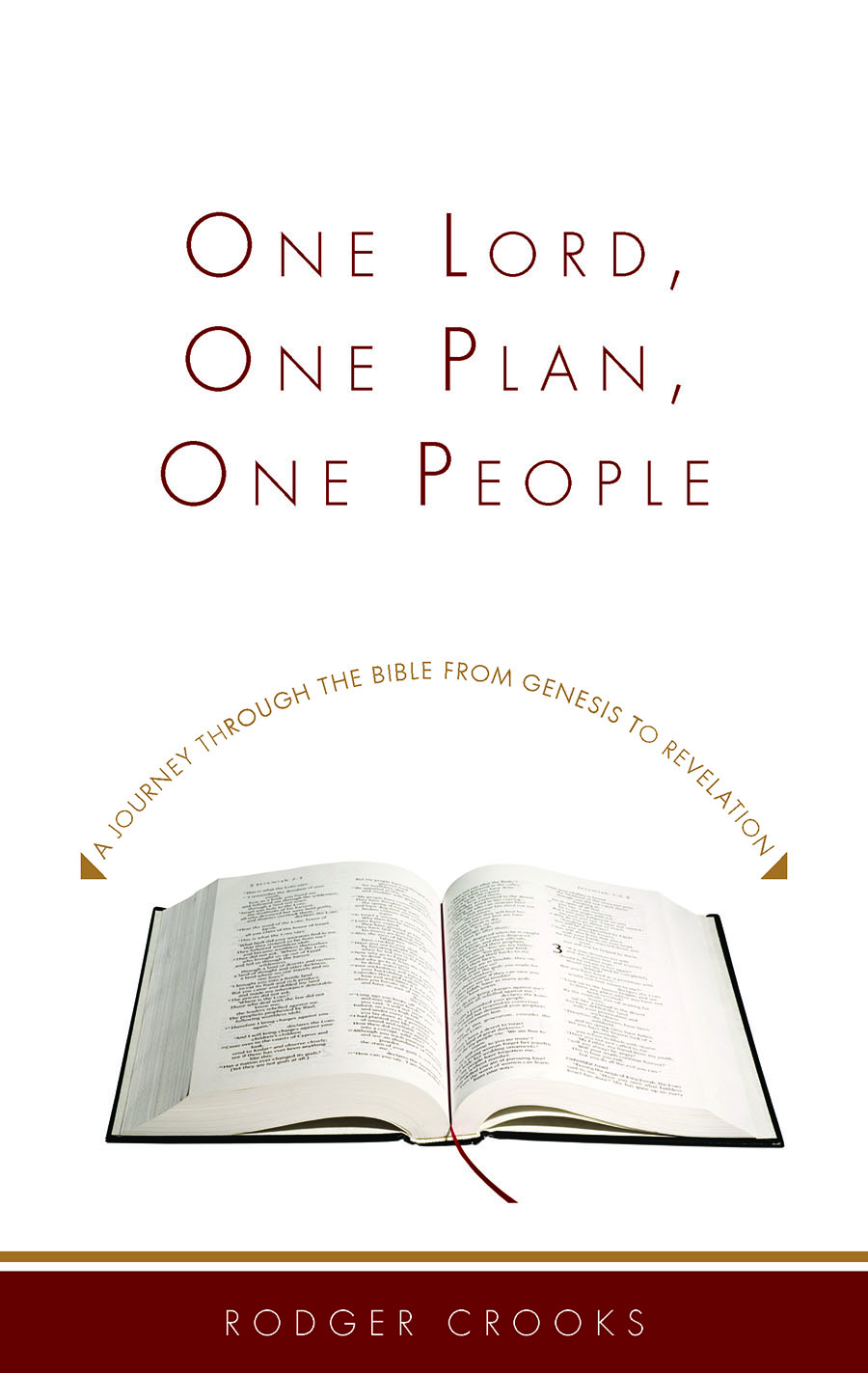The Book of Lamentations
While our ignorance of Lamentations is to be lamented, it has to be admitted that there are reasons for our failure to get to know the book better. Though it is a book of poetry, closely related in style and theme to the Bible’s Wisdom Literature, it is found among the Major Prophets, and easy to neglect among its larger neighbours. But the main reason we tend to neglect Lamentations is that – apart from some statements in chapter 3 – the sombreness of its tone is almost unrelieved.
It is located among the Major Prophets because it has traditionally been linked with Jeremiah. Arguments for and against his authorship are fairly evenly balanced, but I am going to follow the traditional route and say that it was Jeremiah. The book’s context is not in dispute. It was written as a response to Jerusalem’s destruction in 587 bc by Nebuchadnezzar’s army. For its author this was a disaster on many levels. It was a military disaster since the once mighty Israelite army, which, under David’s command, had swept all challengers aside, had been crushed and utterly defeated. It was a political disaster because Judah’s independence had vanished. It is true that for decades Judah had only been nominally independent, but now even that had gone. Never again, except during the time of the Maccabees and the Hasmonean dynasty (142–63 bc) – and since 1948 with the present state of Israel – would the Jews be in charge of their own affairs.
Most of all, it was a spiritual disaster. After stripping it of anything valuable and shipping it back to Babylon (2 Kings 25:13–17), Nebuchadnezzar ordered that the Temple was to be levelled to the ground. Gone was the place to celebrate the great religious festivals. Gone were the priesthood and the sacrificial system. Gone was the Holy of Holies, in which God dwelt symbolically. Gone, so it seemed, were God’s covenant promises to Abraham and David. All this made it a personal disaster for Jeremiah, because he was not a detached spectator. Jerusalem was his city, and the Temple, in spite of the problems associated with it, was where he worshipped. The king, despite royal hostility towards his preaching, was his king, and the defeated army was his army. Jeremiah was personally shattered by the events of 587 bc, and it is almost impossible for us to overestimate the intensity and depth of pain he felt when Jerusalem was destroyed. The worst that could have happened had happened.
The trauma Jeremiah experienced is reflected in the book’s style. As its name suggests, Lamentations is a lament, or a funeral dirge, because the book’s dominant metaphor is that Jerusalem is like a widow (1:1). The language is also very funereal: gloomy, depressing, dressed in black. Even the metre in which Jeremiah writes takes us to a funeral. He utilizes what is known as qinah metre, which creates a falling-rising-falling rhythmic pattern, and this gives the impression that Lamentations is mimicking the start-stop movement of mourners walking behind the coffin in a funeral cortege.
Lamentations is dealing with deep emotions, and poetry, rather than prose, is the best vehicle for doing so. However, Lamentations is a special type of poem: an acrostic one, in which the letters of the Hebrew alphabet are used as the framework for each chapter. The Hebrew alphabet has twenty-two letters, so Lamentations 1, 2 and 4 each are twenty-two verses long. Lamentations 3 has sixty-six verses, a multiple of twenty-two, suggesting that Lamentations 3 is more complex than the other chapters. Lamentations 5 is not strictly an acrostic, but it has twenty-two verses, giving it an acrostic feel.
The book is made up of five distinct poems, and it is this that gives us a clue to Lamentations’ structure since each of them looks at Jerusalem’s destruction from a different angle. Lamentations 1 shows us the extent of the catastrophe. Jerusalem is in ruins with its buildings destroyed, its streets deserted and its reputation in tatters. Those who are left after all the carnage are shell-shocked and destitute. The cause of all this devastation is given to us in Lamentations 2. When all the Lamentations pundits have had their say, in the last analysis it is God himself who is primarily behind what happened to Jerusalem (2:8, 17). In this second poem, there are six references to God’s anger against his people (2:1, 3, 6, 21, 22). Then, in Lamentations 3, we are informed of the cure. In the middle of all this darkness, a few rays of light begin to appear in the shape of the phrases ‘the Lord’s great love’, ‘his compassions’ and his ‘faithfulness’ (3:21-26). These are all covenant terms, and it is because of God’s commitment to his covenant that there is hope of a cure. It was their covenant unfaithfulness which provoked God’s anger and brought his judgment upon them. But, in spite of their unfaithfulness, God is still faithful to his covenant, and so he will not totally abandon his people. It is the Lord’s love, compassion and faithfulness which bring hope in the midst of all the gloom. In Lamentations 4, Jeremiah again reminds everyone that this disaster was the consequence of the people’s sin. As to assigning blame, the first place people should look is in the mirror, for their sin is the reason for God’s anger. In Lamentations 5, the people are encouraged to cry to God for help (5:1), and the book ends with an appeal to God, as the sovereign king, to restore his people (5:19–22).
What is Lamentations’ message? At the simplest level, Lamentations explains to us how to deal with disaster when it enters our lives. Disaster can hit us on a personal level, as in Job, or we can be involved in a national disaster, as in Lamentations. Either way, God does not immunize us against tragedy. Lamentations reminds us that the first thing we need to do is to use our minds. Pop psychology encourages us to start with our feelings and to get everything off our chests. Jeremiah does not accept that. Lamentations is a thoroughly thought through poem, which reminds us that Jeremiah started by thinking about what was going on, and his thinking was not driven by raw pain but by the light of the Bible’s teaching about God. We need to think about things carefully and biblically, but we also need to pursue them to their conclusion. The A-to-Z acrostic nature of the poems points us to this. Jeremiah moved step by step from horrible loss and personal shame to restored hope and prayer for renewal. No matter how carefully and biblically we think matters through, we may well still have questions. Jeremiah is aware of this, which is why he makes his final chapter non-acrostic. Things are not always as neat and systematized as we would wish. No matter how careful and biblical our thinking is, unresolved or partially resolved issues may persist in swirling around in our minds and keeping us awake at night. We get a flavour of this in the final verses as Jeremiah’s hope is dampened by some lingering questions (5:19–22). When this is the case with us, we need to continue to trust in God, reminding ourselves that he is in control and knows what he is doing (5:19).
One of the issues which the destruction of Jerusalem posed in a painful way was God’s faithfulness to his covenant promises. Was God unable to do as he had said? Lamentations is a strong reminder that that is not true. As in his prophecy, the issue of blessings and curses (Deut. 11:26–29; 27:12) is central to Jeremiah’s thinking. God had threatened that, if his people disobeyed him, he would punish them with exile (Deut. 29:22–28). God was now faithful to his covenant threats in sending them into exile. Jerusalem’s destruction actually proved God’s faithfulness, and this is the basis for hope in Lamentations (3:22–26). God had said that he would bring his people back from exile (Deut. 30:1–10), and that is exactly what he would do. God is not just well intentioned; he is totally faithful and does exactly what he promises or threatens.
The paramount picture we have of God in Lamentations is that he is a warrior. While the Old Testament usually portrays God as fighting for his people, such as at the Red Sea (Exod. 14:14) and at Jericho (Josh. 6:16), he is also presented to us as the warrior who punishes his people when they disobey him, such as at Ai (Josh. 7:1–12). Lamentations pictures God as a warrior in this second sense: he is fighting against his people because of their covenant unfaithfulness. However, the prophets of the Exile and those after it look forward to the time when God would come and fight for his people again (Dan. 7; Zech. 14). The New Testament identifies Jesus as the divine warrior (Isa. 9:6), who defeated the forces of evil on the cross (Col. 2:13–15), a victory confirmed by his resurrection (1 Cor. 15:55–57). One day, Jesus will return to defeat and crush all God’s enemies finally (Rev. 19:11–21).
Extract from One Lord, One Plan, One People.
Notes

One Lord, One Plan, One People
A Journey Through The Bible From Genesis To Revelation
price From: £8.50Description
While our ignorance of Lamentations is to be lamented, it has to be admitted that there are reasons for our failure to get to know the book better. Though it is a book of poetry, closely related in style and theme to the Bible’s Wisdom Literature, it is found among the Major Prophets, and easy […]
Latest Articles
Jeremy Walker Surveys Recent Banner Titles 17 December 2025
Not every Banner title is for every reader in every season. Books have different strengths, readers different needs and circumstances. For this reason, sometimes a digest of books can help, pointing the way to a book in season. Jeremy Walker, pastor of Maidenbower Baptist Church and Book Reviews Editor for the Banner of Truth Magazine, […]
Biblical Mission Has Biblical Churches as its Goal 10 December 2025
This is the fourth of four posts from Peter Schild (translated by Michael T. Schmid) which together constitute his booklet The Church and Missions. In Acts chapter 14, beginning with verse 21, we see the result of their work: ‘And when they had preached the gospel to that city and made many disciples, they returned […]
